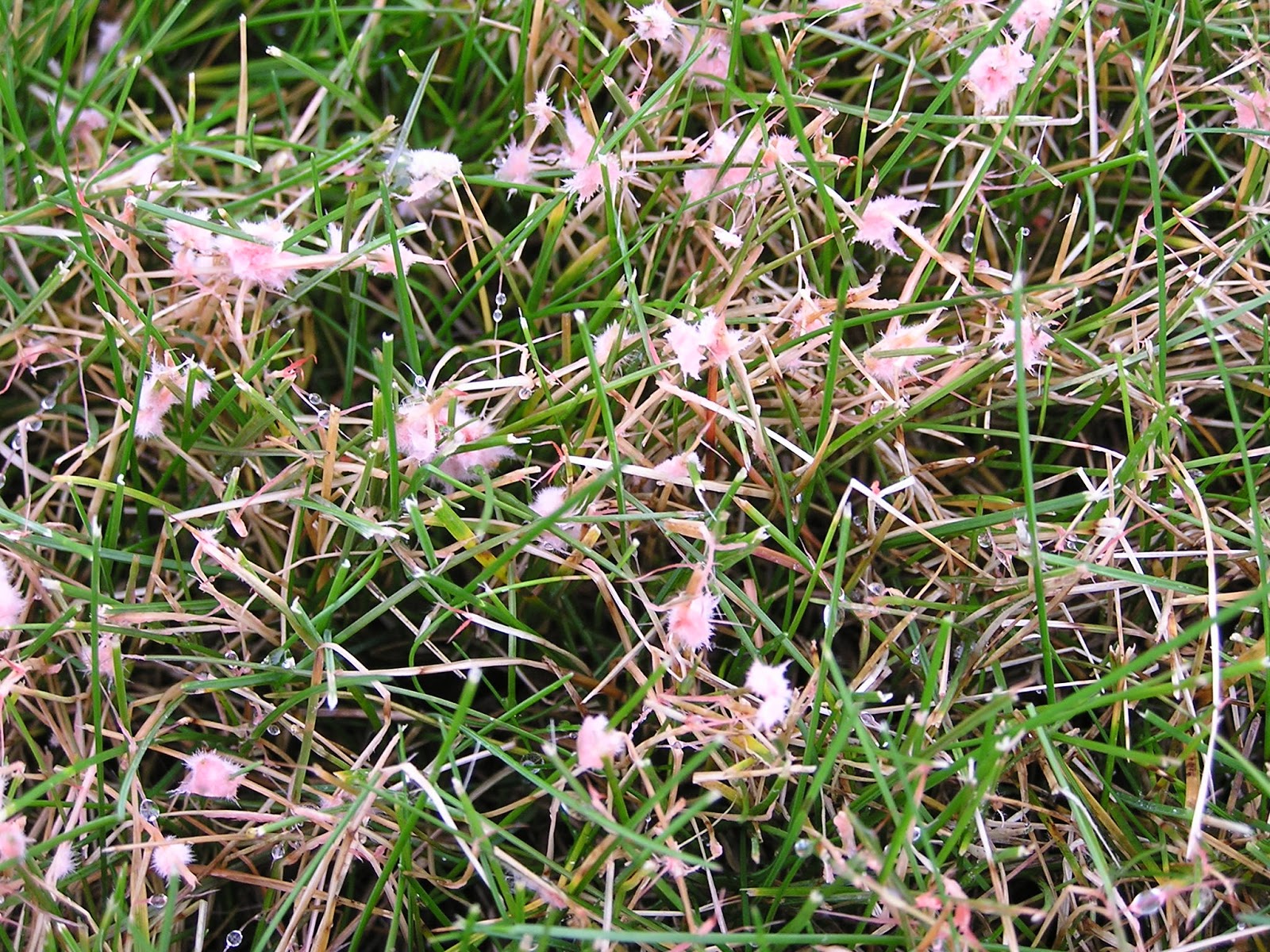Red Thread and Pink Patch Making Annual Appearance in PA Lawns
June 7, 2013 in Extension
Every June, lawns all over Pennsylvania break out in a rash of red blotches. There’s no need to panic, it’s just the annual occurrence of two colorful turfgrass diseases called red thread and pink patch. Red thread is caused by Laetisaria fuciformis, a fungus that forms intertwined masses of hyphae, giving the appearance of red, thread-like strands that attach to the leaves. Pink patch is caused by Limonomyces roseipellis, and produces small wefts of pink mycelia that resemble cotton candy. Both fungi infect leaves through natural openings and mower cuts, and spread rapidly through the remainder of the plant.

Red thread and pink patch typically develop in late spring or early summer when air temperatures are 65° to 75°F, and during periods of rainy or humid weather. Red thread and pink patch can occur separately or together in the same lawn. Sometimes, both causal fungi can be observed growing in the same patch of diseased turf.
All cool-season turfgrasses are susceptible to red thread and pink patch, but perennial ryegrass and the fine fescues seem to be most severely affected. Lawns planted with genetically-inferior turfgrass cultivars tend to develop the most damaging cases of red thread and pink patch.
 Infestations of red thread and pink patch are most intense on underfertilized lawns. Lawns that have not been fertilized in a year or more are far more likely to develop problems with these diseases than those that fertilized on a regular basis. In fact, one of the main remedies suggested for suppressing red thread and pink patch is to fertilize with nitrogen that is readily available to the turf. Although fertilization will not provide 100% control, it is very likely to reduce the diseases to tolerable levels.
Infestations of red thread and pink patch are most intense on underfertilized lawns. Lawns that have not been fertilized in a year or more are far more likely to develop problems with these diseases than those that fertilized on a regular basis. In fact, one of the main remedies suggested for suppressing red thread and pink patch is to fertilize with nitrogen that is readily available to the turf. Although fertilization will not provide 100% control, it is very likely to reduce the diseases to tolerable levels.
Although fungicides are not usually required for red thread control, certain products are labeled for use on these diseases. University trials have shown that flutolanil (Prostar), and azoxystrobin (Heritage) are effective in controlling red thread and pink patch diseases. Be sure to check product labels for rates, timings, and species of grass before making applications.
The good news is that as diseases go, red thread and pink patch are not usually lawn killers. They typically only attack leaves and stems, but often don’t kill the crowns of plant, where new leaf growth originates. Thus, as temperatures warm in summer, disease symptoms usually subside and the lawn recovers.